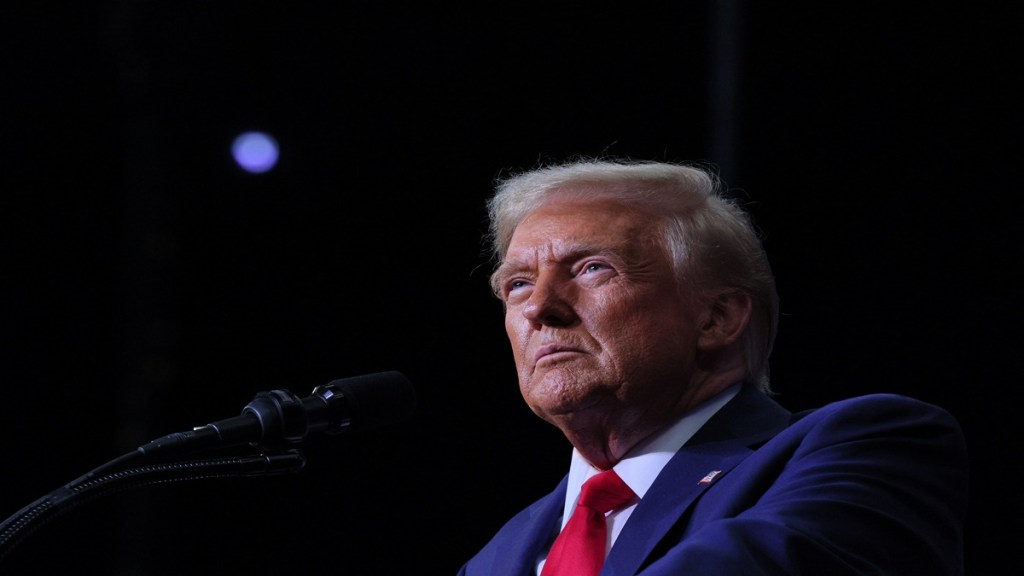As Donald Trump gears up for his presidency, he is already making waves with bold plans that are raising eyebrows across North America. His latest move? Renaming the Gulf of Mexico to “America’s Gulf.” This controversial declaration is just one of many aggressive, headline-grabbing decisions he has made, including offering to buy Greenland, calling Canada the “51st state,” and threatening high tariffs on countries like Brazil and China. But what is really behind this sudden interest in renaming one of the world’s most important bodies of water — and why is Trump focusing so much attention on the Gulf of Mexico?
The Gulf of Mexico: A Vital Geopolitical Hotspot
The Gulf of Mexico is not just a body of water — it is a critical piece of the economic puzzle for the United States. Stretching over 600,000 square miles, it serves as a major hub for US petroleum refining and natural gas processing. In fact, it accounts for about half of the country’s energy refining capacity. It’s also the source of 40 percent of US seafood. With over 17 million acres of marshland and nearly 30,000 miles of shoreline, the Gulf draws millions of tourists each year.
Trump’s desire to rename it “America’s Gulf” may seem like a symbolic gesture, but it’s rooted in deeper geopolitical and economic ambitions. The Gulf surrounds North America and forms an essential corridor between the US., Mexico, and Cuba. The deep-seated US interests in the region are undeniable, and by renaming it, Trump may be signaling an intention to assert more control — both in terms of economic leverage and political power.
Trump’s Message: Strengthening US Control at Any Cost
During his announcement, Trump stated: “We are going to change the name of the Gulf of Mexico to America’s Gulf. Mexico is in a lot of trouble. Mexico will have to stop allowing millions of people to come to our country. Drugs are coming in record numbers. That’s why we are going to compensate for this by imposing tariffs on Mexico and Canada.”
The renaming of the Gulf is directly tied to Trump’s broader immigration and trade policy. By shifting the Gulf’s identity to “America’s Gulf,” Trump seems to be reinforcing his “America First” agenda, positioning the US as the central force in North America. This move also aligns with his previous rhetoric on Mexico, which he often blames for issues like illegal immigration and drug trafficking. The gesture appears to be another way to put pressure on Mexico and Canada, using the Gulf’s symbolic importance as leverage.
A Long History of Name Changes and Geopolitical Statements
Trump’s idea to rename the Gulf isn’t entirely unprecedented. In 2012, Mississippi State Rep. Steve Holland proposed renaming it the “Gulf of America” to critique anti-immigrant rhetoric in the US. He later backtracked, calling it a “tongue-in-cheek” move to mock Republican policies. Similarly, comedian Stephen Colbert jokingly suggested during the 2010 BP oil spill that the US should take responsibility for the disaster by saying, “We broke it, we bought it.”
However, Trump’s approach is different. This is no joke. It’s part of his larger, often controversial diplomatic strategy, which includes high tariffs on key trade partners, aggressive stances on immigration, and claims to strategic assets like Greenland. By renaming the Gulf, Trump is sending a message that he is not only challenging global norms but also reshaping them to fit his vision of American dominance.
What’s Behind Trump’s Broader Geopolitical Strategy?
This proposed renaming is part of a series of ambitious moves that showcase Trump’s vision of reshaping global politics. From suggesting the US should purchase Greenland to calling Canada the “51st state,” Trump’s diplomatic playbook has been unorthodox and unpredictable. His administration’s posture on global trade, particularly with countries like China, Brazil, and Mexico, suggests a president who is willing to act unilaterally, placing US interests above all else.
His approach to foreign relations is not without its risks. His focus on economic leverage — like imposing tariffs and threatening sanctions — could have far-reaching consequences for international alliances. By rebranding the Gulf of Mexico, Trump is making a symbolic statement that he sees this region as an extension of US power, both politically and economically.
The Future of “America’s Gulf”
As his presidency unfolds, it’s clear that Trump’s administration will prioritize a more assertive and perhaps confrontational approach to geopolitics. Whether the Gulf of Mexico will officially bear the name “America’s Gulf” remains to be seen, but the message is unmistakable: Trump intends to assert control over strategic assets and reframe the narrative around US dominance in the Western Hemisphere.
The world is watching as Trump continues to push boundaries with his bold proposals, from global trade policies to territorial disputes. While renaming the Gulf may be a symbolic gesture, it signals a president who is prepared to use every tool at his disposal to reshape the global order — starting right off the coast of America’s shores.

